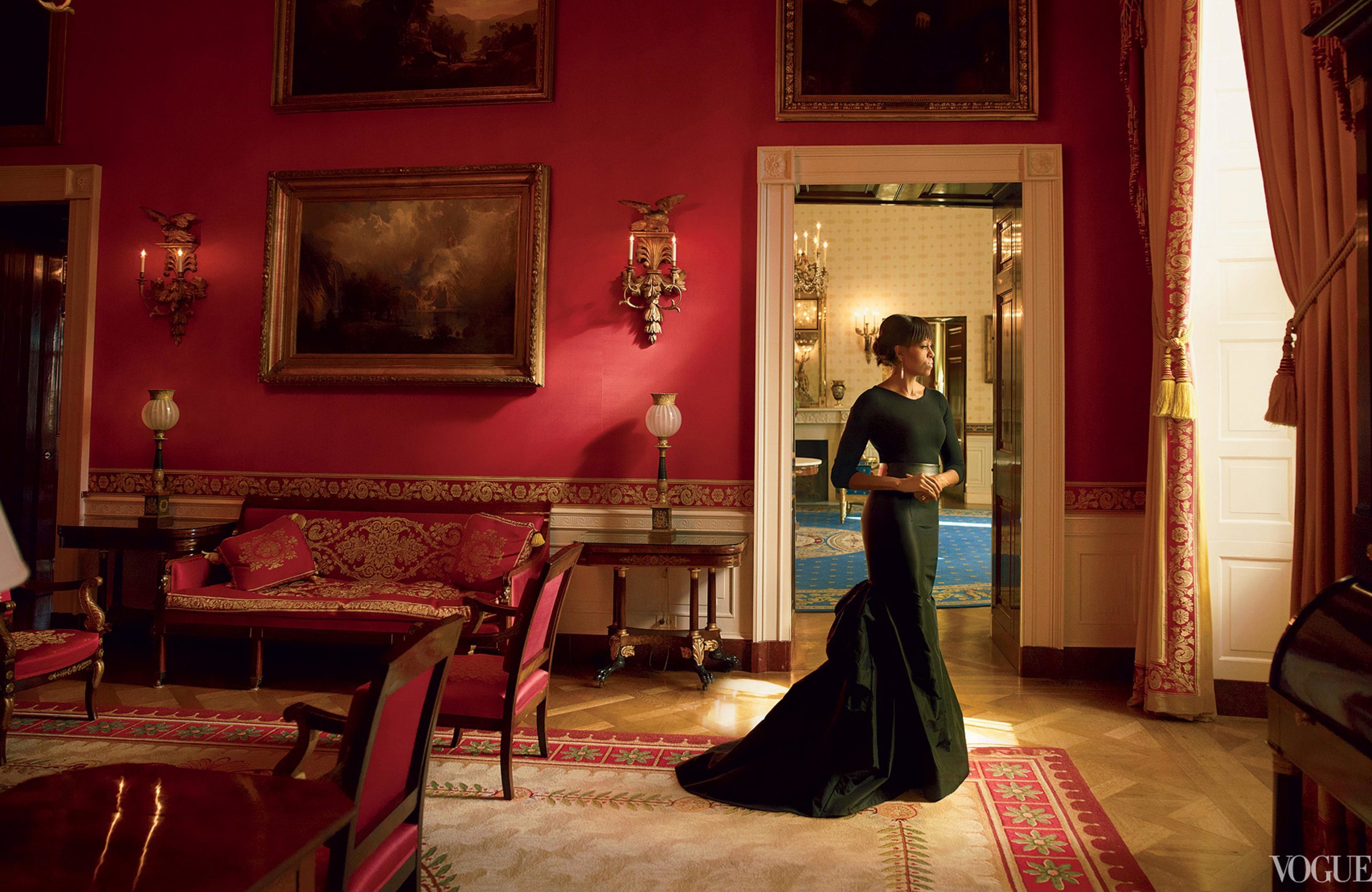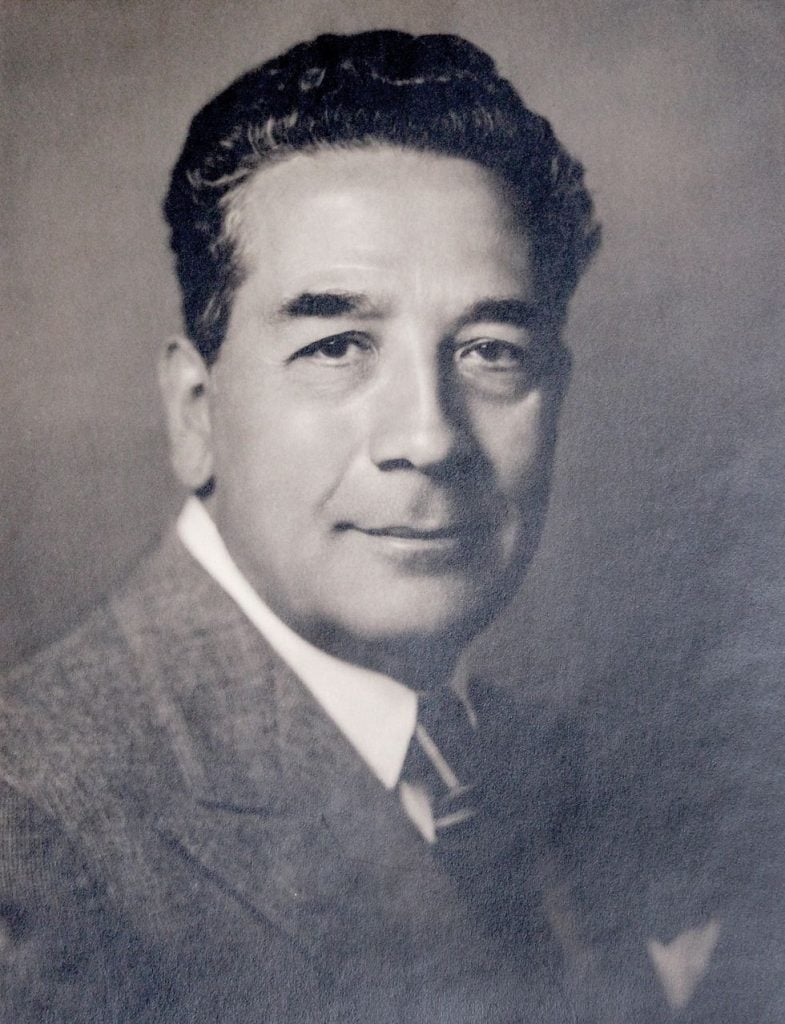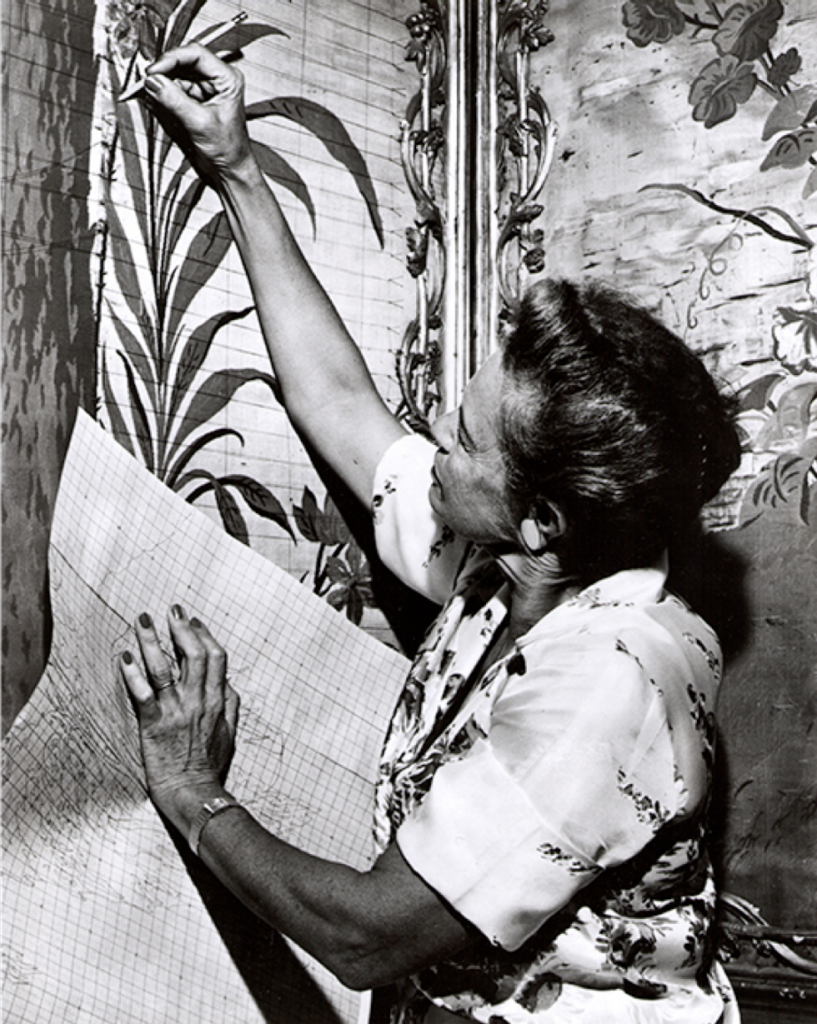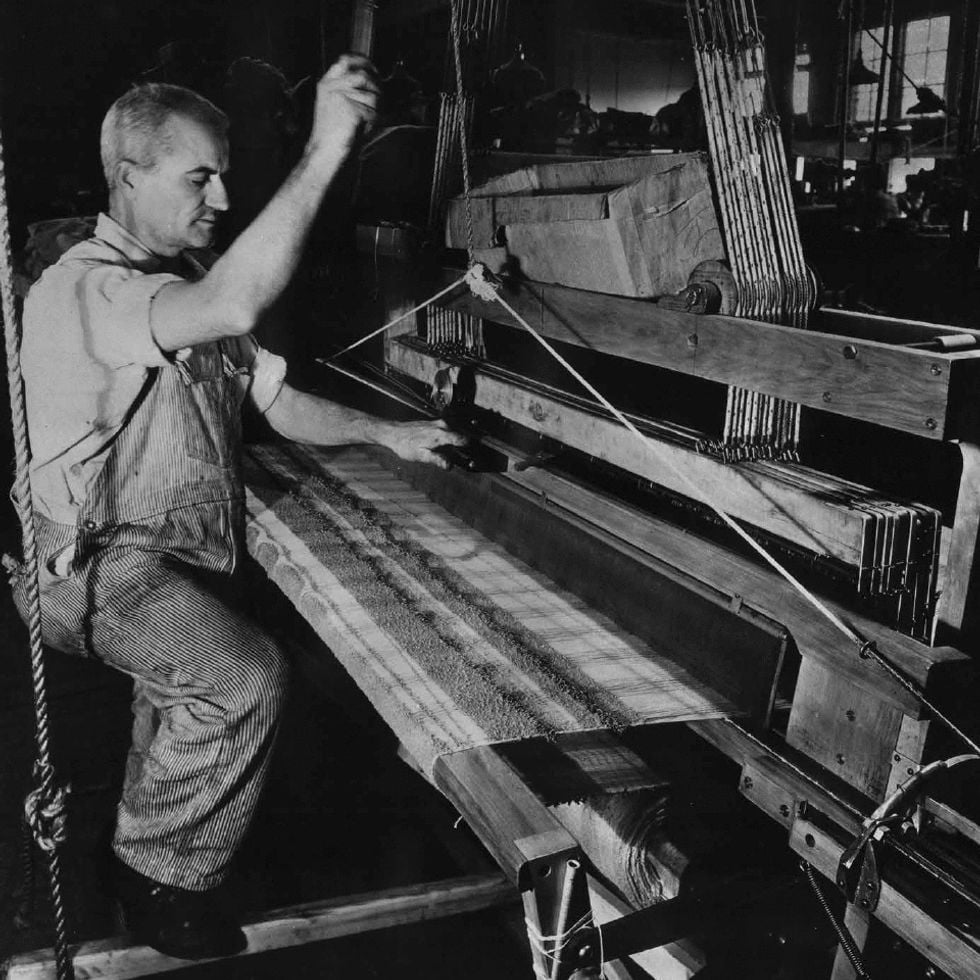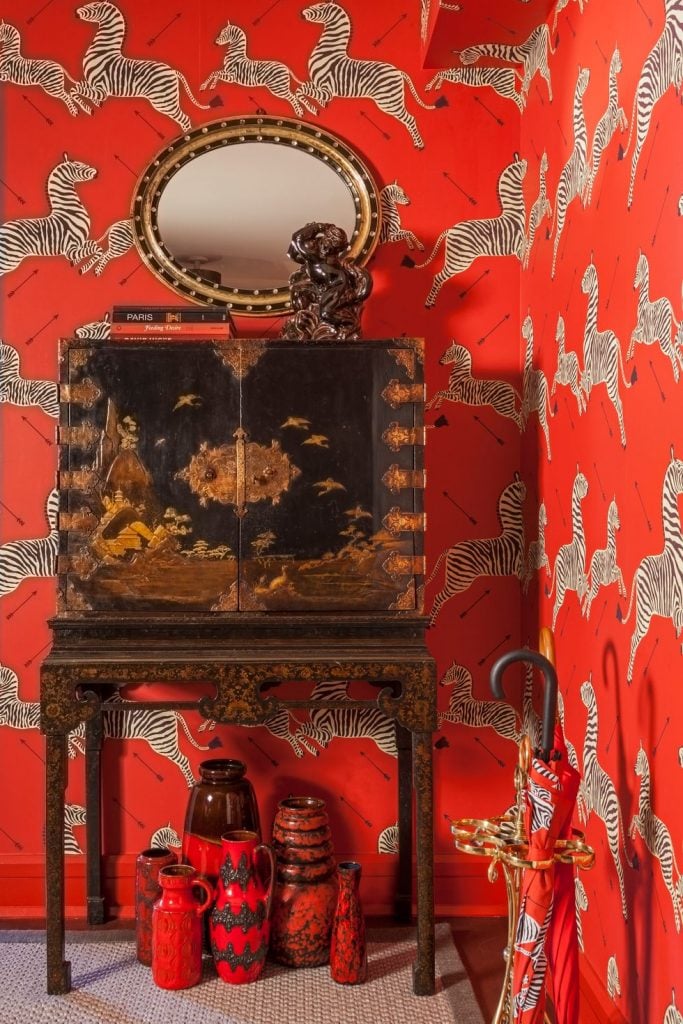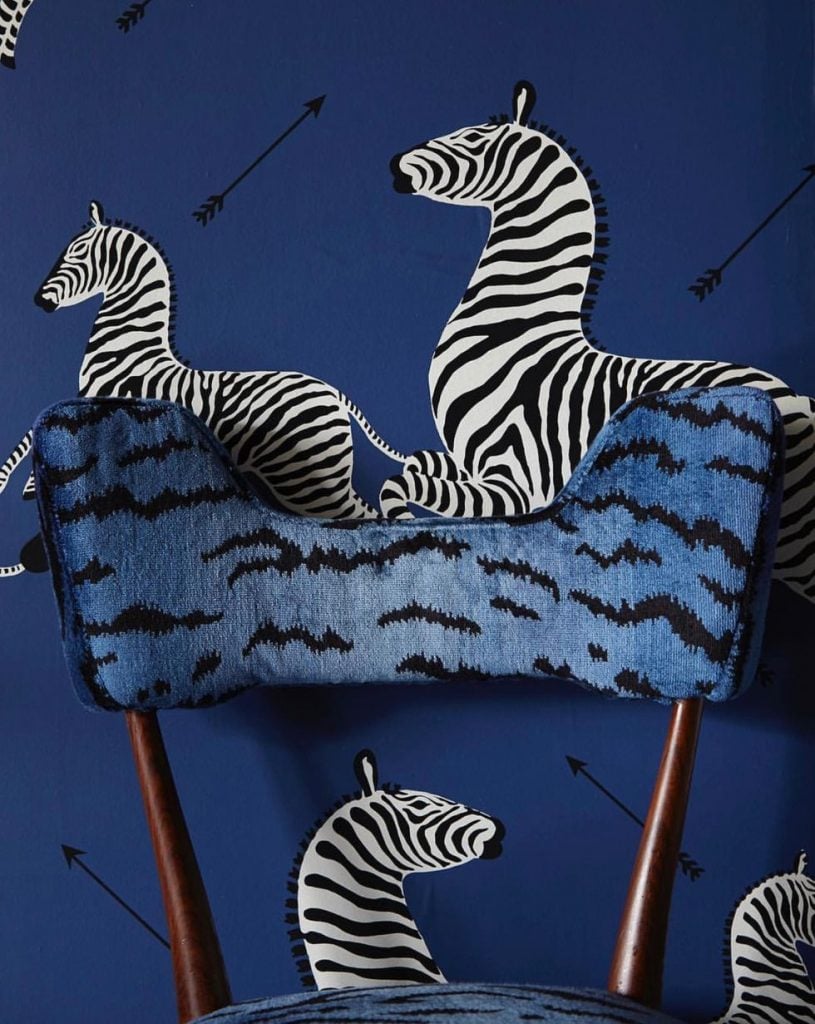The story of Scalamandré is an American story. Born in 1929, the house of Scalamandré started in the home of an Italian immigrant couple and quickly found its way through the doors of The White House.
THE BEGINNING
Courtesy of Scalamandre
Franco Scalamandré immigrated to America in 1923 to escape the rising control of Mussolini and the fascist regime. An engineer by trade, Scalamandré landed a job with Westinghouse. He eventually took a job as a draftsman and, later, as a teacher at the Sealy School of Interior Design.
During his time at the Sealy School, Scalamandré met Mrs. Sealy. The pair began importing Italian fabrics and furnishings, solidifying the concept that would ultimately lead Scalamandré to create a fabric house in the states. At the time, Patterson, New Jersey was a booming textile production town, and Scalamandré was able to produce his first yardage with one weaver and a single loom.
By 1929, Scalamandré had saved up enough money to buy a brick mill in Long Island City, which would lay the foundation for one of America’s leading fabric manufacturers. 1929 may seem like an unfortunate year to start a new business, but surprisingly, many American heritage brands (like Macy’s) started that same year.
SCALAMANDRE SILKS
Courtesy of Scalamandre
During the Great Depression, word of “Scalamandré Silks” spread quickly, and Franco also met Flora Baranzelli, a talented artist who came from a family of Italian painters. The two were married, and this union cemented their partnership as a design dream team. Flora’s elevated eye, when combined with Franco’s innovative approach to manufacturing, would pave the way for Scalamandré’s success.
As more Europeans began fleeing the continent, Scalamandré, the now booming fabric company, found itself fully staffed with some of the most talented weavers. With the addition of more machinery and a full-scale dyeing operation, the company took over their entire 50,000-square-foot building.
WARTIME EFFORTS
Courtesy of Scalamandre
During World War II, Scalamandré, like many American companies, shifted its attention to wartime efforts. Nearly 80% of the company’s production was war-related: parachute silk, camouflage netting, and uniform braids.
Following the war, Scalamandré made two important hires: Adriana and Gino Scalamandré, the couple’s children. They shifted their attention to luxury projects and historic reproductions. Some of their most noteworthy projects included the great mansions of Newport, the Kennedy White House, and Hearst Castle.
A FAMILY AFFAIR
Adriana Scalamandré married Edwin Bitter, who joined the family business in sales and marketing. The couple had four children—Ward, Robert, Mark, and Tami—who carried on the business alongside their parents. Scalamandré remained a leader in textile production throughout the 20th century. Their commitment to art and craft yielded a legacy of “all things rare and beautiful,” according to Scalamandré biographer Steven Stolman.
AN ICONIC MOTIF
Photo: James and Karla Murray
In 1945, Gino Circiello, an immigrant from Argentina and a friend of the Scalamandrés, opened a small Italian restaurant on New York’s Upper East Side called Gino’s. Circiello envisioned a stylish and swanky spot and asked for design assistance. Inspired by the zebra upholstery that the Scalamandrés had once done for the El Morocco nightclub, Circiello requested a similar design. Flora produced a sketch of prancing zebras fleeing a hunter’s arrows, and an iconic motif was born. That pattern was repeated on printed wallpaper the color of spaghetti sauce and became the signature of Gino’s. Fast-forward to 2001. That year, director Wes Anderson picked the same print for the family brownstone in The Royal Tenenbaums, allowing an entirely new generation to fall in love with Scalamandré’s Zebras.
A FAVORITE AMONG DECORATORS
Bryant Keller for the 2012 Kips Bay Show House, Courtesy of Scalamandre
A study of the archives reveals that Scalamandré was a sourcing staple for iconic decorators, such as Eleanor McMillen Brown and Nancy McClelland. Its prominence in the interiors of Miles Redd and Nate Berkus reveals that it remains relevant to the designers of the moment.
SCALAMANDRE TODAY
Photo: Genevieve Garruppo, Courtesy of Elle Decor
Although no longer in the hands of the Scalamandré family, Scalamandré remains a family affair with its CEO Louis Renzo and his sons Christopher and Louis Nicholas managing the operations of the legendary textile house. In 2017, Scalamandré merged with Stark Fabric and continues to operate 13 to-the-trade showrooms in major metropolitan locations, including its flagship New York location. The forward-thinking team, led by president Chad Stark, is paving the way in ushering an old-school industry into the digital age. Our collaboration is just the beginning.

